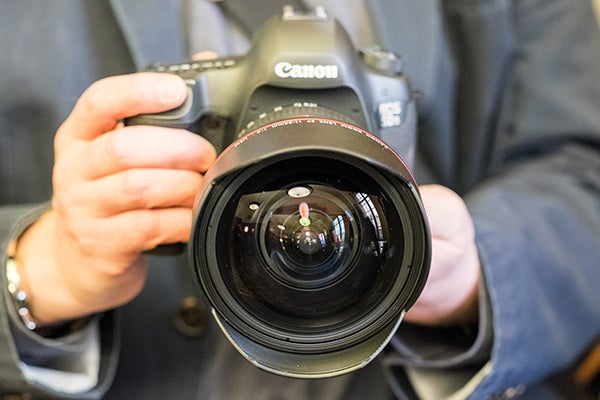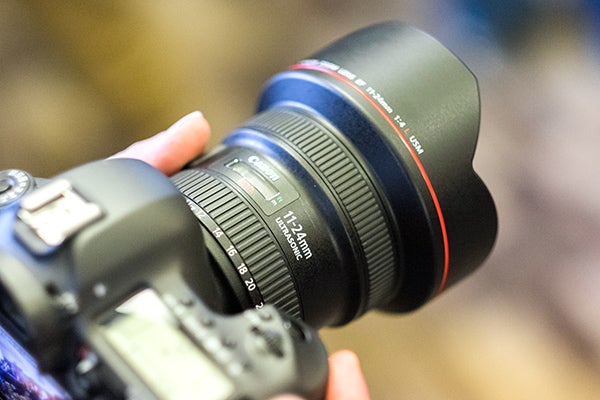Canon EF 11-24mm f/4L USM Review
Canon EF 11-24mm f/4L USM
Hands-on: A mighty lens at a mighty price

Verdict
Pros
Cons
Key Specifications
- Review Price: £2799.00
A lens for the serious landscape photographer
We don’t often cover lenses on their lonesome, but the Canon EF 11-24mm f/4L USM is a bit special. It’s the widest-angle rectilinear zoom lens for full-frame DSLRs in the world, making it a perfect companion for the just-announced Canon 5DS or 5DS R.
At £2799 the Canon EF 11-24mm f/4L USM is far out of reach for most photographers, but should be of interest to professional landscape photographers and very serious enthusiasts.
Canon EF 11-24mm f/4L USM – Design and Focusing
While the Canon EF 11-24mm f/4L USM doesn’t have the sheer size of a high-end zoom or prime that focuses on more extended focal lengths, this lens is a formidable presence. It’s large, and very heavy.
Its 1.18kg weight instantly marks this out as a serious lens, and it’s front-heavy too. Looking at the thing, this is not surprising.
The Canon EF 11-24mm f/4L USM uses an awful lot of glass has a very bulbous front that virtually mandates the fixed hood, which protects the glass that blooms out from the front. You can’t use the lens with any filter holders at present – current models just won’t fit – but Canon says it’s working with Lee Filters to produce one in the future.

As you’d hope from a Canon EF lens of this grade, build quality is fantastic. It’s fully weather-sealed too, capable of performing in all conditions as long as you’re careful about protecting the front lens element.
There’s no aperture ring here, just zoom and focusing, and to us the friction of the two rings felt roughly the same. The zoom ring requires just a quarter turn to move through the lens’s focal range, making quick adjustments easy. We found the AF/MF switch easy to find from our position behind the camera too.
Canon EF 11-24mm f/4L USM – Features
The Canon EF 11-24mm f/4L USM uses an Ultrasonic Motor for fast and silent focusing, and is the first to use two layers of sub wavelength coating. What this does is to reduce flare and ghosting caused when light passes through the various glass layers that make up a lens: it’s currently used in just a few high-end lenses.
There are no fewer than four four aspherical lenses in the Canon EF 11-24mm f/4L USM, broken down into 16 elements and 11 groups.

Naturally, a lens like this is designed for predominantly landscape photography, and as such the minimum focusing distance isn’t super-close: 32cm at 11mm, working its way down to 28cm at 24mm. That’s similar to the 28cm of the obvious Nikon alternative, the Nikon AF-S NIKKOR 14-24mm f/2.8G ED.

Early Verdict
While we’re yet to take the Nikon AF-S NIKKOR 14-24mm f/2.8G ED out for a proper shoot, first impressions suggest it offers exactly the quality you’d hope for from a £2800 lens.
Incredible build quality and the sheer amount of glass that goes into its construction makes it imposing to use at first. But we can’t wait to see what its images are like.



